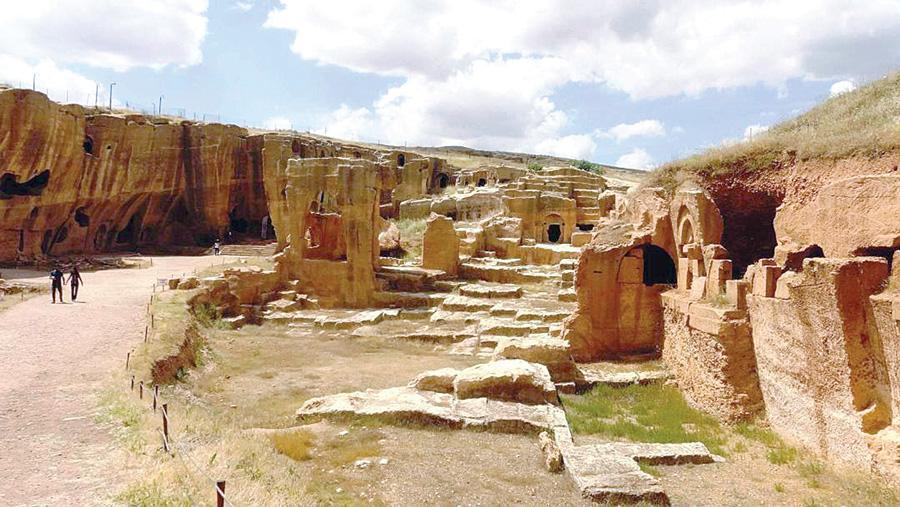
The ancient city of Dara, established by the Eastern Roman Empire to protect its border against the Persians, has been rushed by tourists since the arrival of summer.
The ancient settlement - featuring remains of ancient churches, palaces, bazaars, dungeons and an armory and water dam - in the eastern Anatolian province of Mardin is poised to become the “second Ephesus” in Turkey, said Özgür Azad Gürgör, president of Mardin Tourism and Hoteliers Association.
Dara, dating back 2,300 years, is known as the “Ephesus of Anatolia” due to its resemblance to the ancient city in İzmir province.
“Dara is a place where people of every religion -Assyrians, Muslims, Yazidis and Christians- can relate to themselves. In that respect, we want everyone to come here and explore it,” Gürgör said.
The number of visitors to Dara has quintupled over the past five years, according to statistics from the Turkish Culture and Tourism Ministry.
“This year, tourists coming to Mardin has created serious potential. One of the most interesting historical areas in the region is Dara,” he said.
Gastroway organizer Gökmen Sözen, who brought tourists to Dara within the scope of the Gastroway organization under the auspices of the Ministry of Culture and Tourism, said that Dara should be introduced to the world.
Excavations over the years
As excavations and scientific research have continued for the past 33 years, historical buildings and artifacts have slowly come to light one by one in the once lesser-known archaeological site.
The ancient city was used as a military base by the Eastern Roman Empire against warring forces from the Persian Sassanid Empire and takes its name from the Persian King Darius.
Due to its location on the historical Silk Road, Dara also has religious, social and commercial importance. Excavations have so far unearthed lots of architectural ruins from various periods.
The archaeological excavations began in 1986, but only 10 percent of the area, where a village is located, was uncovered because of insufficient funds.
During excavations carried out in various areas of the village, rock tombs and cisterns were uncovered by removing 10 meters of alluvial filler.
Among the historical finds revealed in the excavations are the city walls, water cisterns, rock tombs, churches, agora, bridges, silos and similar structures that met the needs of the ancient city’s residents.
Over a period of 25 years, archaeological digs slowly revealed a monumental mass graveyard. The cistern, located at a depth of 25 meters under a village house in Dara, which is similar to the Yerebatan Cistern in Istanbul and called the “Dungeon” by villagers, was cleaned and unearthed in about 15 years.
Located 30 kilometers away from Mardin city center, the ancient city is flocked by visitors even on hot summer days.
A “must-see” in Turkey
İbrahim Bilgiç, the mukhtar (head) of Dara neighborhood, has called for the Culture and Tourism Ministry to list the ancient city as a must-see.
“We want the ministry to include Dara, which we see as Ephesus, in its places worthy of seeing. Dara should be included in the tour programs for tourists who visit Mardin. In addition to the monumental rock cemeteries, the gallery in Dara is an open-air museum with its cisterns, where two of the four in the world are located, five kilometers of walls surrounding the ancient city and mosaics. If the entire city is unearthed, Dara will be one of Turkey’s most important tourism centers,” he said.